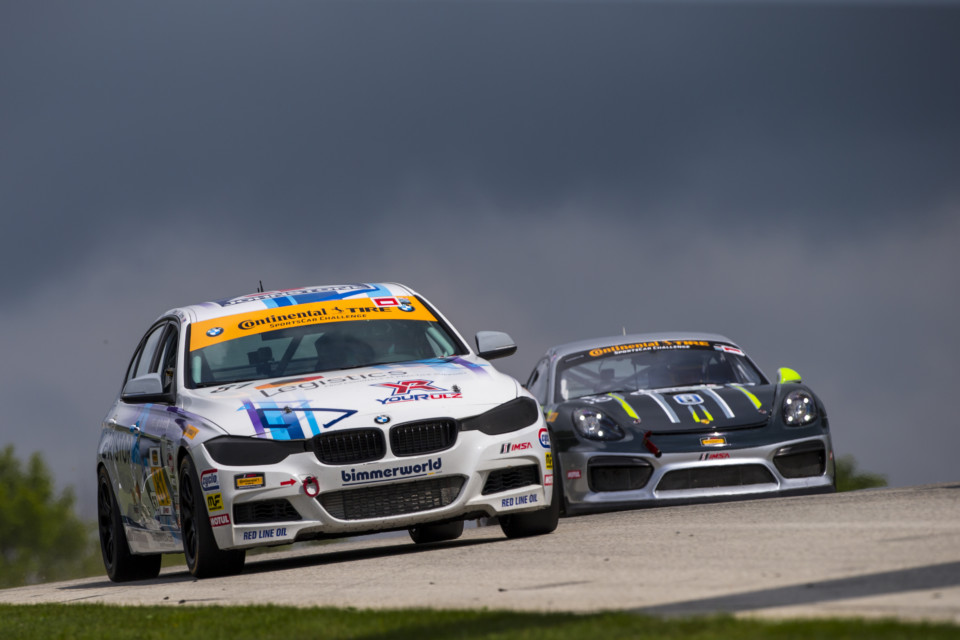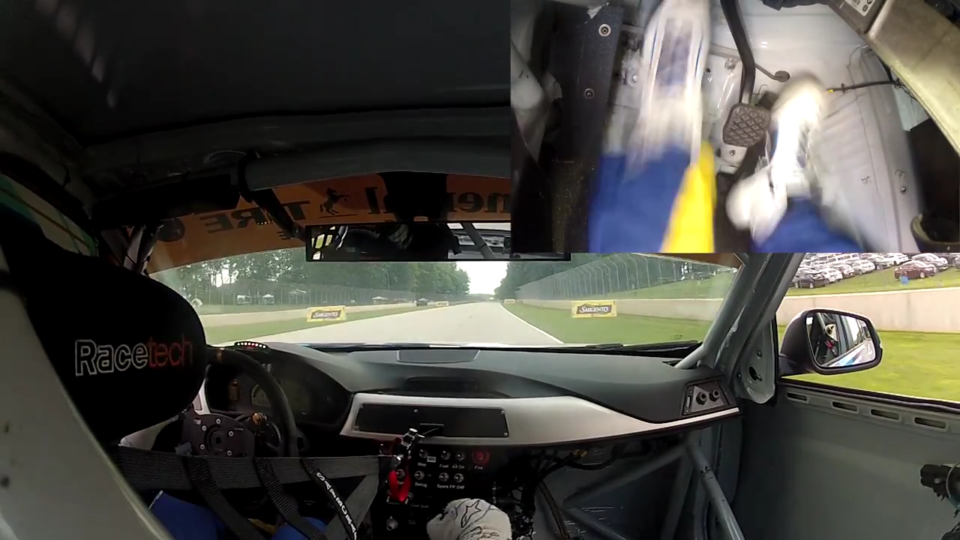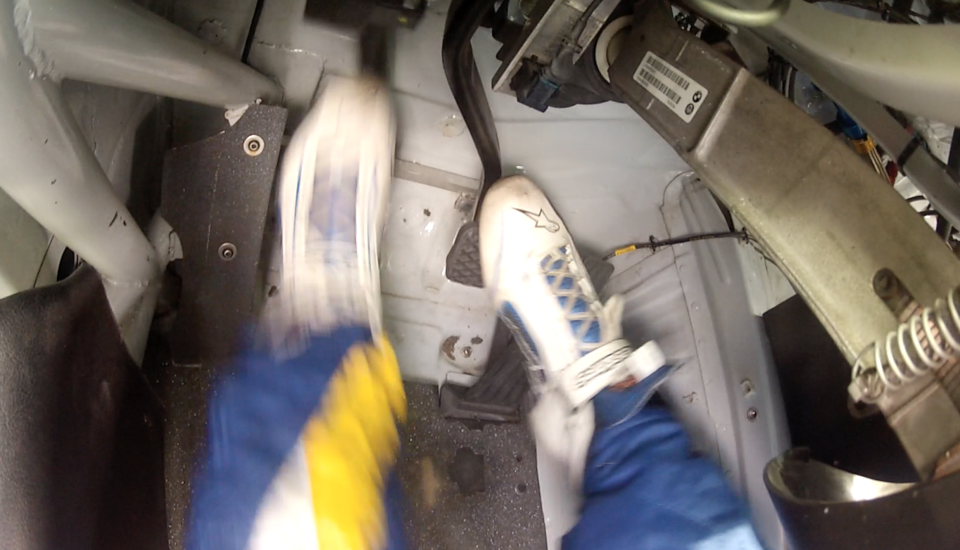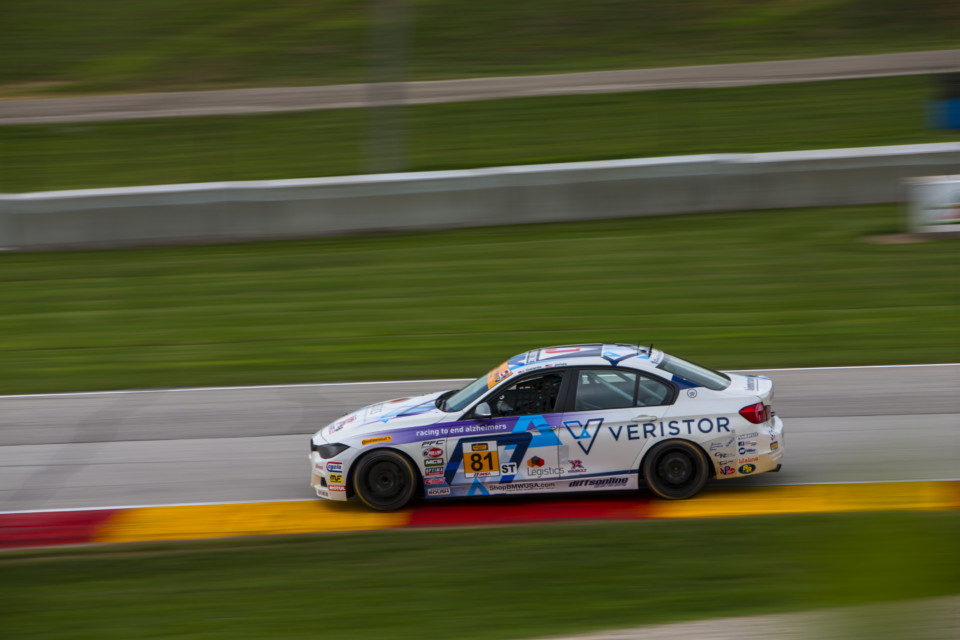Even in a series like Continental Tire SportsCar Challenge, where the production-based racer is prized and simplicity reigns supreme, teams are moving away from the h-pattern gearbox. The gains from paddle shifters are simply too good to avoid. Next year, the series will become the IMSA Michelin Pilot Challenge, with two classes: TCR and GS, and both will use paddle-shifted gearboxes.
Nick Galante, a Monterey-based racer currently racing in Continental Tire SportsCar Challenge’s ST Class, competes in what might be one of the last professional, televised, road racing series featuring h-pattern gearboxes. His Bimmerworld ST F30 328i is one of the few models still using a manual gearbox in the series, and in many ways, it’s one that bears the closest resemblance to its production sister.
Power outputs in the Street Tuner (ST) class range from 220-280 horsepower, and these cars share many of the same stock parts with the street variant. Yet, even in this introductory class, in which many drivers begin their climb up the IMSA ladder, the value of the paddle-shifted sequential is not ignored, and many teams are turning to paddles to find extra performance.
Getting the take of a professional racing driver (someone who’s supposed to care only about efficiency and results) on this matter sheds the sort of light that can help end the age-old debate about the merits and downsides of these two styles of transmission. With the professional’s experience, as well as their subjective impression, we learn what it really means to race a car with that odd stick in the middle and that extra pedal on the left.
P: Aside from improved shift times and no chance of a mis-shift, what are the strong points of the paddle shifter?
G: I think a strong point of paddle shifting is the ability to flawlessly shift in the middle of a turn. When upshifting or downshifting a manual gearbox in the middle of a high-load turn, it can be difficult to keep the remaining inputs smooth (steering, throttle, and brake). When using both legs to upshift or downshift, in a high-g scenario, it is very challenging to use precise inputs due to the lack of an anchored leg on a dead pedal, for instance.
G: Another strong point is the ability to quickly adapt to a sudden change of plans. For example, if you find yourself suddenly over-slowed at the apex of turn from a late pass attempt either from you (or on you), and you need to quickly toss another one down, you can quickly get that done.

Photo credit: Halston Pitman
P: Another advantage of the paddle arrangement is that it usually frees the left foot for braking. Do you prefer left-foot braking in a paddle-shifted car?
G: I do. I’ve been playing with braking with both feet over the course of my career. It’s fun to try to find a unique way for each car; whether it uses a full-paddle, sequential, or H-pattern gearbox. For a while, I was even left-foot braking in manual gearboxes, but only in turns which didn’t require an upshift or downshift. My weigh-in on the subject is very simple: do what works best for you and the health of the car.
P: How do you think losing the clutch pedal and the coordination needed alters the driving experience?
G: This opens up different sets of challenges to either focus on, or, entirely new challenges from the paddle box itself.
Satisfied with the lesser-known dimensions of the paddle-shifted transmission, I asked Galante for his take on the conventional stick-and-clutch arrangement. In asking these questions, I wanted to avoid the typical discussion around the skill involved in shifting, rev-matching, and so on; these points have been discussed ad nauseam.
P: Are there any benefits to the h-pattern gearbox? Skipping gears, for instance?
G: I have opted to skip gears before in manual gearboxes. Sometimes the car can brake really well in certain situations and it is beneficial to skip a gear on the way down because the car is decelerating faster than I could shift.
P: Did you lose interest in heel-toe once you started racing faster cars?
G: No, I’ve never lost interest in it. I love it. Though, I would say there was a point early on in my career where I noticed it wasn’t a conscious task anymore; it became something I didn’t have to focus on while driving. I was then focusing on the remaining 300 factors.
When omitting the task of shifting manually and rev-matching, the driver’s load isn’t lightened so much as the task becomes completely different. Drivers are still challenged, and by simplifying the footwork involved, it only means that they can dedicate more of their mental reserves to the other demands. That said, perhaps something subjective — something emotional and central to the car/driver interface — is lost.
Although Galante is a lover of the h-pattern gearbox, he looks to the future eagerly. “Even though I am a lover of the H-pattern and always will be, I welcome this ever-changing, wonderful world of transmission technology. I know I will be finding new things to love in motorsport,” he concludes.

























